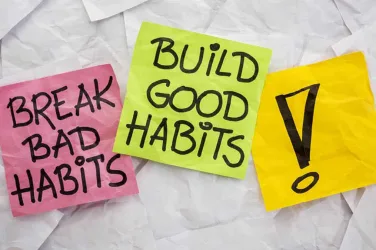February is the Time We Take Cardiac Health to Heart
By Kimberly Axtell
February is the month of love, the color red, romance, chocolate, and all things hearts—and it also happens to be American Heart Month. Yes, it’s time to think about the ole ticker, the very muscle that transports nutrients, oxygen, and hormones throughout your body, and keeps you alive!
Though heart health is now recognized as a top health priority, it wasn’t always this way. Historically, many people would go days, months, or years without thinking about the importance of the heart. For the critical muscle to register on most people’s radar it took drastic action—getting it its very own month.
Let’s jump back in time to the year 1963. More than half of U.S. deaths are due to cardiovascular disease (such as heart attack and stroke). To create awareness, President Lyndon B. Johnson proclaims February “American Heart Month.” Although having a defined heart month brings attention to the disease, it still doesn’t often register as a concern for women. As late as the early 2000s, heart problems are often considered a “men’s disease.” The word heart attack usually carries the stigma of an overweight, middle-aged man on the floor holding his chest.
At the time, the biggest health concern for women was breast cancer. What ladies may not have realized was that heart disease was their greatest risk, claiming the lives of one in three women. Monumental action had to occur for not just some but all Americans to truly recognize the importance of heart health.
Birth of the Red Dress
In 2002, the federal government launched “The Heart Truth.” The national campaign increased awareness among women about their risk of heart disease. This later led to the creation of the Red Dress symbol to represent women’s heart health. The sassy symbol stuck and skyrocketed heart disease awareness. As of 2020, nearly everyone has jumped on the bandwagon, from major corporations to celebrities.
The heart was finally put center stage, and it’s even gotten a fashion show in its honor. Every February, celebs put on a slinky red gown and strut the runway for the Heart Truth Red Dress Fashion Show—not to mention hundreds of heart ball events that are held across the country, many in partnership with the American Heart Association.
Live a healthy lifestyle!
Heart disease is still the number one killer (one in five deaths). And one in every four women will die from the condition as well. But there is good news. Heart disease often can be prevented by making healthy lifestyle changes. Aim for a nutrient-rich diet, loaded with vitamins, minerals, and fiber. Exercise daily to maintain a healthy weight. And most importantly, stop smoking.
Let’s Go Red
To create awareness, encourage a “Go Red” day at your job, school, or in the community. If you own a red dress, consider getting some use out of it for the day. Together we can raise heart health awareness!

A Closer Look at Heart Health
What is heart disease? Heart or cardiovascular disease occurs when blood vessels constrict or become completely blocked. When blood to the heart is obstructed a heart attack will occur.
Know what to watch for.
While heart attacks can strike suddenly, often people will experience symptoms hours, days, or weeks leading up to the attack. Red flags should go up if you’re experiencing tightness, pressure, or aching pain in your chest that travels to the jaw, neck, and arms—seek medical attention ASAP. Shortness of breath, fatigue, cold sweats, indigestion and heartburn can also be signs of an oncoming heart attack.
Heart disease symptoms vary greatly between women and men. Women often experience fatigue, nausea, and shortness of breath. The signs are frequently overlooked as flu or even tiredness. Men on the other hand typically suffer from pain on the left side of their chest along with pain in their arm, neck, and jaw.
Keep hormones in check.
Out of whack hormones put you at risk for heart disease. Be sure to have your annual physical exam and blood work to ensure everything is working properly. If heart disease runs in your family opt for a yearly EKG.
Be heart healthy.
Move more! Aim for 15 to 30 minutes of moderate-intensity physical activity each day such as walking, running, or biking. All it takes is simple tweaks to your daily routine. Consider jump-starting your morning by walking the dog. Opt to take the stairs at work instead of the elevator. Your heart will thank you as it becomes more efficient at pumping blood throughout your body.
Get creative with flavor.
For starters, toss the salt and skip those TV dinners. Prepackaged and processed food tends to be high in sodium. Put on your chef hat on and start cooking at home. This allows you to know exactly what’s in your food. To achieve savory flavors utilize fresh herbs, spices, and lemons. You won’t even miss the salt!










